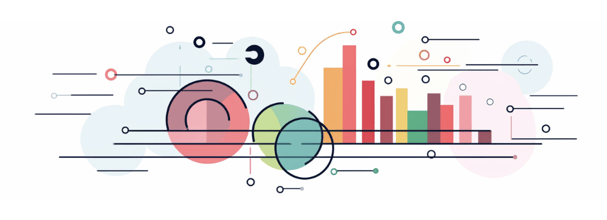7 Key Capabilities to Deliver an Amazing Post-Order Experience in B2B eCommerce
In the ever-evolving business landscape, the combined force of Millennials and Gen Z commands a staggering 64% of business buyers. Their influence is...
5 min read
 Naresh Ram
:
Oct 20, 2023 8:59:27 AM
Naresh Ram
:
Oct 20, 2023 8:59:27 AM
One of the distinguishing requirements of B2B Commerce lies in the treatment of pricing. Many B2B companies, house an extensive array of SKUs, numbering in the hundreds of thousands, if not more. This inventory richness allows them to offer an extensive range of products, that provides customers with a wide array of choices.
These customers tend to have strong customer loyalty. With their loyalty comes an expectation for competitive pricing, often arrived at through negotiation.
To navigate this intricate landscape, successful B2B companies employ sophisticated pricing strategies. They recognize that substantial profit potential hangs in the balance. These companies refuse to be bound by rigid pricing structures in order to attract and retain their customers. The top players in the game often customize pricing at the transaction level, align the incentives of their sales teams with pricing strategies, and make substantial investments in technology -- both for formulation and real-time computation of prices.
Yet, 85% of companies in a global survey conducted by Bain and Company admit they have plenty of room for improvement in pricing practices. Companies can up their game by embracing platforms and architectures that not only model their pricing puzzles but also deliver real-time solutions at scale delivering responses in milliseconds.
So, why is this so difficult? Your Sales Rep, Joe, can flip a few pages, punch in a few numbers on his trusty calculator and provide your customers a price right there on the phone, right? Well, for your eCommerce system, life isn’t that simple.

Several factors contribute to the complexity of B2B pricing. These elements impact the storage, retrieval, calculation, presentation, and updating of prices.
Price Lists Galore
B2B pricing can get tricky, even when you're just trying to figure out the price for a single product. First, you might consider contract or customer-specific pricing. If those aren't available, you'll move on to tier pricing, based on the customer's tier. Alternatively, you could factor in volume pricing, depending on the quantity in the cart or what's been purchased that month. After that, you might look at channel-based or current discounted pricing. And if all else fails, you could resort to a standard discount off a set book price. But keep in mind, all these steps put a lot of strain on the system's computing power.
Volume
On top of all the complexity, there's a sheer mountain of data that needs to be tackled. In your typical B2B catalogs, you have hundreds of thousands of products, sometimes reaching a quarter million products. And, each of these products might come in different sizes, colors, and configurations. So, when you're aiming for straightforward pricing, you're dealing with a whopping 500,000 rows. Now, throw in three tiers, and you're staring at a colossal 2 million rows.
And there's more! Add contract or customer-specific pricing into the mix. If just 10,000 customers have 500 contracted products each, that's an additional 5 million rows on top. Then, there's volume pricing, discount pricing, and channel pricing to consider. All in all, you're looking at somewhere in the ballpark of 10 to 25 million pricing rows.
Navigating through and putting together all this data for pricing requires some serious thinking and organization. It's like assembling a jigsaw puzzle the size of a football field.
Rule Based Pricing
Rule-based pricing, a technique frequently employed by eCommerce retailers, injects an additional layer of complexity by imposing constraints on top of diverse price lists. Essentially, it's like adding logical “if-then-else” conditions on top of your regular price lists. Here is an example rule "if the price is lower than the cost plus the minimum margin, then set it to be the cost plus the minimum margin." By incorporating such rules, pricing managers can infuse their prior pricing expertise into the optimization process, leading to more efficient pricing strategies. However, it can cause a bit of a headache when you're trying to keep two systems, like your ERP and eCommerce, in sync. Your only choice is to duplicate all those rules, or somehow synchronize the rules themselves between the systems.
Change
While it may not be a universal rule, B2B pricing can indeed be very quick to change. The dynamism is not uncommon, with rates fluctuating frequently due to factors like negotiations, market conditions, or discounting. This ever-evolving pricing scenario significantly impacts the complexity of the system. It demands not only the ability to swiftly incorporate these changes but also to ensure accuracy, consistency, and transparency in real-time.
We had a customer who had 25 million records, with 20% of the prices changing daily and 90% changing monthly. We were able to solve for this challenging scenario, and also for rollbacks in case something went wrong.
Response Time
Managing complexity becomes a whole different ball game when it comes to serving product listing pages. It's one thing to handle prices for just a single product or a handful, like on a Product Detail Page or in the shopping cart. However, when you dive into the territory of Product Listing or search pages, each of those pages can be a bustling marketplace, featuring anywhere from 20 to 100 or more products. Calculating the precise price for each of these products, tailored to the specific customer, in real-time, and then delivering it to the user's browser within a split second is a formidable challenge. It's like orchestrating a high-speed, real-time pricing symphony with an entire orchestra of products on stage!
Now that we understand the factors that influence the overall complexity of B2B pricing, let’s delve into some strategies we can employ to effectively tackle it.

In the world of B2B pricing, things naturally tend to get a bit tangled with all those price lists, rule-based pricing, lightning-fast changes, and the need for speed. However, there are strategies that can be put in place to tackle this complexity while still delivering the lightning-quick responses that eCommerce users expect. Here are some strategies we employed.
Segmentation
The good news is that on many B2B websites, each pricing request is linked to a single account and user. This simplifies things because we don't need to crunch numbers for multiple accounts and products in a single transaction. Customer-specific pricing can be segmented on the account. Tier pricing can be grouped by tiers, while channel pricing can be grouped by channels. This leaves volume and standard book pricing as they are. This approach reduces the number of pricing records in each segment to more manageable numbers (like under 5 million.) The result is tremendous performance gains.
Caching
Effective caching can make a big difference in performance. Even if we set the cache to refresh every 10 minutes, it can significantly speed things up. When customers move from one page to another within the same session, they often view the same products, making caching a powerful tool.
Storing Pricing on Search Engines
Like caching but a bit more proactive, the standard book price and volume price can be stored in the search engine. This means we don't have to fetch those 1.5 to 2 million records separately.
Sometimes, we can take even more advantage of the search engine's capabilities. If the business can keep the number of customer tiers manageable, say in the tens to low hundreds, the index can handle storing and delivering tier-based pricing as well. In exceptionally rare instances, when a single SKU appears in fewer than a few dozen Customer Specific Price lists, we might even consider storing that in the index. But, let's be honest, that's a pretty rare occurrence, and most of the time, we need to resort to different strategies.
Multiple Stored Formats
In some cases, having the same pricing data in multiple formats can be beneficial. We can use the most performant data store for the purpose. For instance, we stored 25 million pricing records in a flat table, which allowed us to update new records in less than a minute. The 25 million records consisted of customer specific prices, tier prices, volume prices and standard book prices. We loaded some of the records, such as the standard and volume pricing, to the search engines. Our product listing and search pages used search engine data, while product detail and cart pages relied on the flat tables. This approach gave us the best of both worlds.
In conclusion, navigating the intricacies of B2B pricing is no easy feat. It involves juggling a myriad of factors, from complex pricing logic to the sheer volume of data, all while maintaining responsiveness and accuracy. To thrive in this challenging landscape, businesses need to adopt innovative strategies, leverage technology, and adapt to the ever-evolving pricing dynamics. Yet, 85% of companies do not leverage the full advantage of dynamic pricing because of technology restrictions or make the process a hassle for the customers, increasing friction to sale. By adopting innovative solutions, B2B businesses can both deploy a highly effective pricing strategy as well as serve web pages with sub-second response time, increasing conversion and gaining customer trust.
Want to deploy your pricing strategy to the web? Book an appointment today.
This article was co-authored by our articulate and prolific Chief Science Officer, Naresh Ram and our highly talented eCommerce guru and Chief Technology Officer, Rajeev Hans.

In the ever-evolving business landscape, the combined force of Millennials and Gen Z commands a staggering 64% of business buyers. Their influence is...
.png)
Millennial and Gen Z professionals now constitute 64% of business buyers according to a new report from Forrester Research Inc. As this...

Today's B2B customers prefer platform self-service over speaking to a sales rep on the phone. And honestly, who can blame them? It's akin to wanting...